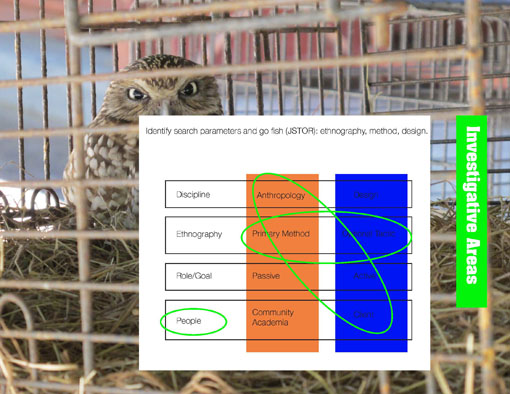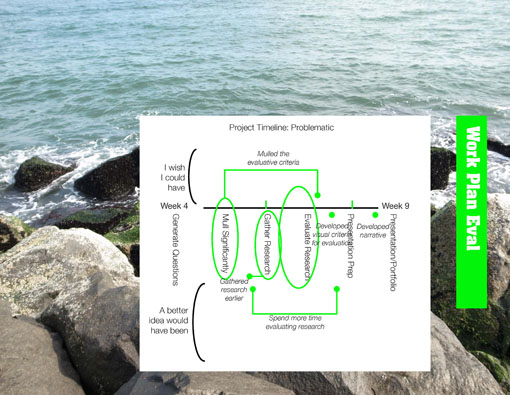Translation or adaptation?
Posted on April 21, 2011 | posted by:Borrowing and adaptation may be two hallmarks of good design practice—one that reevaluates and reflects while in progress. What happens when designers borrow methodologies from other disciplines? Do designers or design practices utilize adopted (or co-opted) methods as intended by the original discipline? Or, is there a process of abstraction at work? In the case of ethnography, is it thought of and used by designers as a method or metaphor?
My question for my Design-Led Research project then became: If designers reframe a problem when searching for design solutions, how is this like the anthropologist’s self-investigation during the process of ethnography? A larger question or purpose for this question was: Can I come to an understanding of ethnography as method AND as metaphor?
As design enlarges its focus and participates in issues of social justice and complex systems, ethnography as emerged as a favorite methodology for designers. Ethnography may be seen by designers to have the weight of a (social) scientific authority. Ethnography seems to add rigor and a framework to a part of the design process that is often hidden; it reveals the generative process during the accumulation of knowledge. A designer’s ethnographic work is become important not only during the design process but also as documentation of the process itself.
Ethnography is a diverse category of practice—there are many ways to do it, talk about it, and ‘use’ it. As a design practitioner and as someone with a background in anthropology, I was interested in exploring the ways in which ethnography is conceptualized by as a tool for designers.
Because of the heavy theoretical components, I wanted to limit my scope to academic publications in order minimize language problems and keep the conversation focused on a few key points.
I developed a framework for searching key words and used my own intuition to weed out some articles and to include others. I actively read the selected articles, diagramming the use of the word ‘ethnography’ and it was situated it within a practice.
My findings are best articulated through the language of time–how much time did I spend thinking and researching, versus diagramming and understanding (thinking takes time!).

